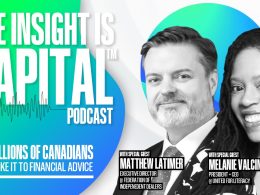by Stephen H. Dover, CFA, Chief Market Strategist, Head, and Rick Polsinello, Senior Market Strategist, Franklin Templeton Institute
At its recently concluded meeting, the Federal Open Market Committee left the fed funds rate unchanged and issued a hawkish message. Franklin Templeton Institute discusses the changes in the Fed’s expected timing for possible future rate cuts.
As was widely expected, the Federal Reserve (Fed) decided to leave the fed funds rate unchanged at the Federal Open Market Committee (FOMC) meeting that concluded on June 12, with members voting unanimously to maintain the target rate range at 5.25%–5.50%.
The June FOMC meeting was a quarterly one, and the Fed’s updated “dot plot” (formally named The Summary of Economic Projections or SEP) did show that the median expectation is for one cut of 25 basis points by year’s end, down from a median of three cuts as of three months ago. Also, four Fed officials now do not believe that any cuts will need to happen by the end of 2024, which was two as of a few months ago. One Fed official actually conveyed that there may not even be a case to cut rates this year or next. Overall, this was clearly a hawkish announcement. However, the median FOMC member projects five cuts by the end of 2025, down only one from the six cuts expected as of the last SEP.
The Fed’s long-run neutral rate (where monetary policy is not overly restrictive nor too accommodative) was modestly higher at 2.8%. Its 2024 and 2025 gross domestic product growth expectations stayed at 2.1% and 2%, respectively. The Fed indicated that economic activity has continued to expand at a modest pace. It also believes that the job market is strong and unemployment will remain at the current level of 4% throughout 2024—with the unemployment rate only ticking slightly higher to 4.1% by the end of 2025.
Also as expected, the Fed communicated to the markets that the voting members will continue to slow down their balance sheet trimming.
Fed Chair Jerome Powell also repeated that the “committee does not expect it will be appropriate to reduce the target range until it has gained greater confidence that inflation is moving sustainably toward the 2% target.” The Fed’s preferred gauge of inflation, the core Personal Consumption Expenditures Index, remained at 2.8% in April, while the May core Consumer Price Index stood at 3.4%. The Fed does not expect the core PCE to decline to its 2% goal until 2026. Powell also continued to say that the risks to achieving its dual mandate of price stability and maximum employment have kept “moving into better balance.”
Finally, the Fed stressed that it would continue to be highly data-dependent in its monetary policy decisions and that economic activity has continued to expand at a solid pace, inflation has eased but remains elevated, and that job gains remain strong.
*****
WHAT ARE THE RISKS?
All investments involve risks, including possible loss of principal.
IMPORTANT LEGAL INFORMATION
This material is intended to be of general interest only and should not be construed as individual investment advice or a recommendation or solicitation to buy, sell or hold any security or to adopt any investment strategy. It does not constitute legal or tax advice. This material may not be reproduced, distributed or published without prior written permission from Franklin Templeton.
The views expressed are those of the investment manager and the comments, opinions and analyses are rendered as at publication date and may change without notice. The underlying assumptions and these views are subject to change based on market and other conditions and may differ from other portfolio managers or of the firm as a whole. The information provided in this material is not intended as a complete analysis of every material fact regarding any country, region or market. There is no assurance that any prediction, projection or forecast on the economy, stock market, bond market or the economic trends of the markets will be realized. The value of investments and the income from them can go down as well as up and you may not get back the full amount that you invested. Past performance is not necessarily indicative nor a guarantee of future performance. All investments involve risks, including possible loss of principal.
Any research and analysis contained in this material has been procured by Franklin Templeton for its own purposes and may be acted upon in that connection and, as such, is provided to you incidentally. Data from third party sources may have been used in the preparation of this material and Franklin Templeton (“FT”) has not independently verified, validated or audited such data. Although information has been obtained from sources that Franklin Templeton believes to be reliable, no guarantee can be given as to its accuracy and such information may be incomplete or condensed and may be subject to change at any time without notice. The mention of any individual securities should neither constitute nor be construed as a recommendation to purchase, hold or sell any securities, and the information provided regarding such individual securities (if any) is not a sufficient basis upon which to make an investment decision. FT accepts no liability whatsoever for any loss arising from use of this information and reliance upon the comments, opinions and analyses in the material is at the sole discretion of the user.
Products, services and information may not be available in all jurisdictions and are offered outside the U.S. by other FT affiliates and/or their distributors as local laws and regulation permits. Please consult your own financial professional or Franklin Templeton institutional contact for further information on availability of products and services in your jurisdiction.
Please visit www.franklinresources.com to be directed to your local Franklin Templeton website.
CFA® and Chartered Financial Analyst® are trademarks owned by CFA Institute.
Copyright © Franklin Templeton Institute













